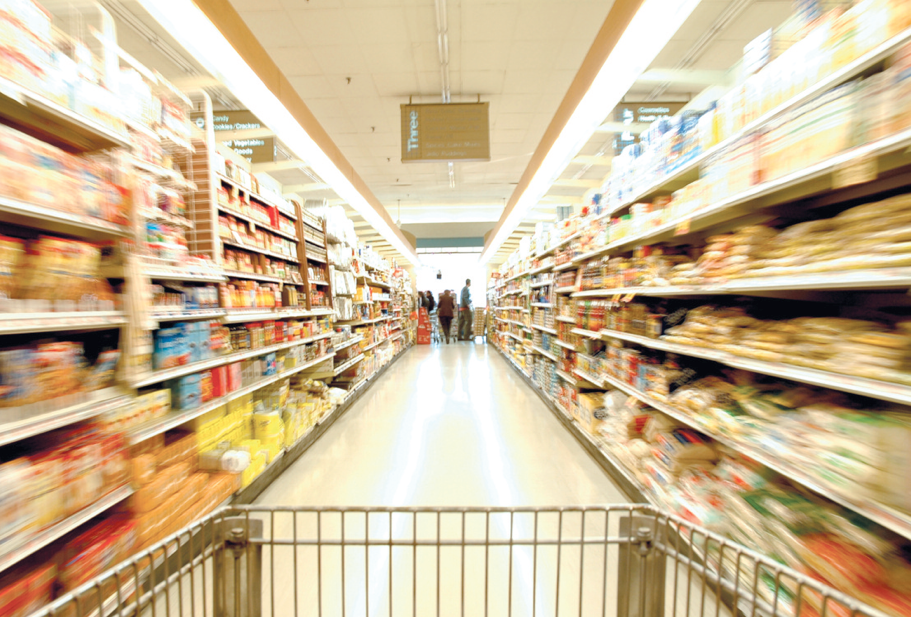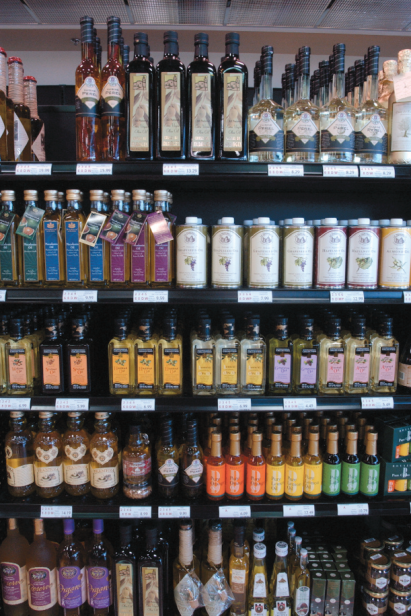Shelf-Labeling Programs: Coming Soon to a Supermarket Near You
Overwhelmed at the cereal aisle? Confused in the bakery? Should you pick the cereal that touts its fiber content or the one that is lowest in added sugar? Is nine-grain bread better than seven-grain bread? So many options and so much to know. How do you decide?
Most of us read the food label looking for a hint about which brand to buy. The ingredient list is helpful if you’re worried about artificial additives. The calories-per-serving information is helpful if you’re on a diet. Food labels are full of important health information but, for most of us, standing in the aisles doing mathematical calculations to determine the best source of protein from among several brands of cereal is just too time consuming.
Sometimes I wish for the old days when shopping in the supermarket was about price and freshness. I might have spent a little extra time at the meat counter looking for the freshest ground beef but I wouldn’t have spent time trying to decide among 10 different kinds of ground beef based on fat content and where and how the animal was raised. I might have compared two cans of soup for price but certainly I would not have stopped to look at their ingredient lists.
Most of us are suffering from nutrition information overload. We’ve got labels. We’ve got brochures. We’ve got articles. Each tells us something different. What are we to do?
Have no fear: Your supermarket is coming to the rescue to make shopping for healthy food a little bit easier. Grocers around the country understand your frustration with food labels and many are adopting nutrition shelf labeling programs intended to make it easier for you to determine the healthiest choice from among the many similar brands.
Remember how much easier shopping became when supermarkets added shelf labels that let you know how much the food cost per ounce or per piece? We no longer had to try to figure out which bottle of salad dressing or bag of chips was the best buy. The shelf label gave us that information by listing how much we would pay per ounce or per serving. That simple bit of information made comparisons among brands so much easier.
The new nutrition shelf labeling programs will serve the same function, but for health. One of the first programs was introduced on the East Coast early in January at Price Chopper stores. It’s called NuVal. The NuVal program evaluates foods, both fresh and packaged, and confers a grade of 1 to 100, with 100 being the healthiest. The evaluation criteria are based on 30 different nutrients and components of food. The higher the score, the higher the nutritional value of the food. Both favorable (like calcium) and unfavorable (like saturated fat) food components are considered in the calculation.
The scoring system was developed under the auspices of a scientific advisory board with funding from a hospital and without any input from trade associations or food manufacturers. The NuVal program is licensed to supermarkets.
Ellie Wilson, senior nutritionist for Price Chopper supermarket chain, says the shelf tag program is like “shining a bright light in an objective way to make it easier for consumers to make healthier choices.”
NuVal gives consumers the ability to make informed choices without having to read labels or do math. Some of the rankings might surprise consumers: Kashi 7Whole Grain Puffs has a score of 91 while Kashi Go Lean Crunch Protein and Fiber Cereal with Honey and Flax has a score of 40. The lower score is most probably due to the addition of honey and/or other sweeteners to the healthy-sounding cereal. My favorite cereal and one of my guilty pleasures, Corn Pops, scores only 20. Sigh.
Foods like broccoli, spinach and strawberries have a score of 100. Whole milk has a score of 51 while nonfat milk has a score of 91. Why the difference? Both milks are good sources of protein, calcium and vitamin D as well as other nutrients. Whole milk is also a source of saturated fat but nonfat milk is virtually fat-free, hence the difference in their rankings. The program stresses that it’s OK to choose foods with lower scores once in a while, but that consumers should aim for the higher scores whenever possible.
Other stores have developed their own programs that they believe fit their consumer niche better. Susan Moores, of Kowalski’s in the Twin Cities, instituted a rating system related to specific health concerns: bone health, brain health, heart health and immune function. Foods that support each of these areas are tagged accordingly. Moores believes that shelf programs like this one help consumers focus on the positive attributes of food.
Arizona’s own Bashas’ Family of Stores, under the direction of Barbara Ruhs, Bashas’ corporate dietitian, is rolling out the Eat Smart shelf tag program at the beginning of 2009. Ruhs decided to develop her own program for Bashas’ because she believes that just assigning a number to a food doesn’t really help guide people with health problems like diabetes, which is a major problem in Arizona.
“A food may earn a high score with the NuVal program for nutrients but may not be suitable for someone with a chronic disease like diabetes,” says Ruhs.
The Eat Smart program will start out with six shelf tags representing the leading causes of death in Arizona. To begin with, Ruhs is targeting heart disease, diabetes, bone health and immunity with tags for Healthier Options, Low Sodium, Heart Healthy, Calcium Rich, Reduced Sugar and Immune Boosting. The Bashas’ stores stock in excess of 30,000 items, many of them food. Ruhs plans to roll out the program slowly, beginning with 300 tagged items. More will be added periodically until all the foods in the store are tagged.
“Bashas’ shelf tag program will encourage people to make wholesome food choices that are naturally rich in vitamins and minerals as well as low in fat, sugar and sodium. It’s my goal to de-mystify healthy eating and to empower our customers through this program,” says Ruhs.
Representatives from both Safeway and Whole Foods report that they have not yet announced plans to institute a shelf-labeling program. Albertson’s is in the pilot phase of a new nutrition navigation tag system but the program is not available here in Arizona.
Don’t worry that you are at a disadvantage if you don’t shop at a store that offers a shelf labeling program; food manufacturers are also getting into the game. Smart Choices Food Labeling, a front-of-package labeling program developed by scientists working in conjunction with food companies including Kraft, Unilever, General Mills, Coca-Cola, PepsiCo, Kellogg’s and Wal-Mart, will soon be placing big green check marks on food packages identified as more nutritious within a food category. Products must meet specific nutrition criteria that limit food components like fat and added sugar, and encourage nutrients like fiber and vitamin C.
Nutrient Rich Foods Coalition is another ambitious program being developed along with food trade associations such as the National Dairy Council, Wheat Foods Council, California Avocado Commission, Egg Nutrition Center and others. The Nutrient Rich Foods program is based on the principle of nutrient density: Nutrient-dense foods are those that provide a substantial amount of nutrients with the fewest calories. Adam Drewnowski, PhD, is the principal researcher for the program. According to the Coalition, “Our research helps identify foods that provide more nutrition per bite in order to help people make smarter food and beverage choices.” Eventually the program will develop tools to help people apply the Nutrient Rich Foods scoring to food choices at the supermarket.
There may be an added benefit to all these nutrition scoring programs besides making shopping trips a little less stressful. Ellie Wilson of Price Chopper thinks that the scoring systems may coax manufacturers with less favorable scores to reformulate their products to make them healthier. I’m hoping Corn Pops will one day be reformulated, but still taste as good.







